Photos:
FGM,
Emily_M_Wilson,
powerofforever,
anouchka,
bwzenith,
Xantana,
hadynyahIconic buildings and stunning scenery play a crucial role in shaping the narrative and atmosphere of a movie, offering more than just a backdrop. These elements can evoke emotions, ground the story in a specific time or place, and even become symbols that resonate with audiences long after the credits roll.
Highclere Castle - Downton Abbey
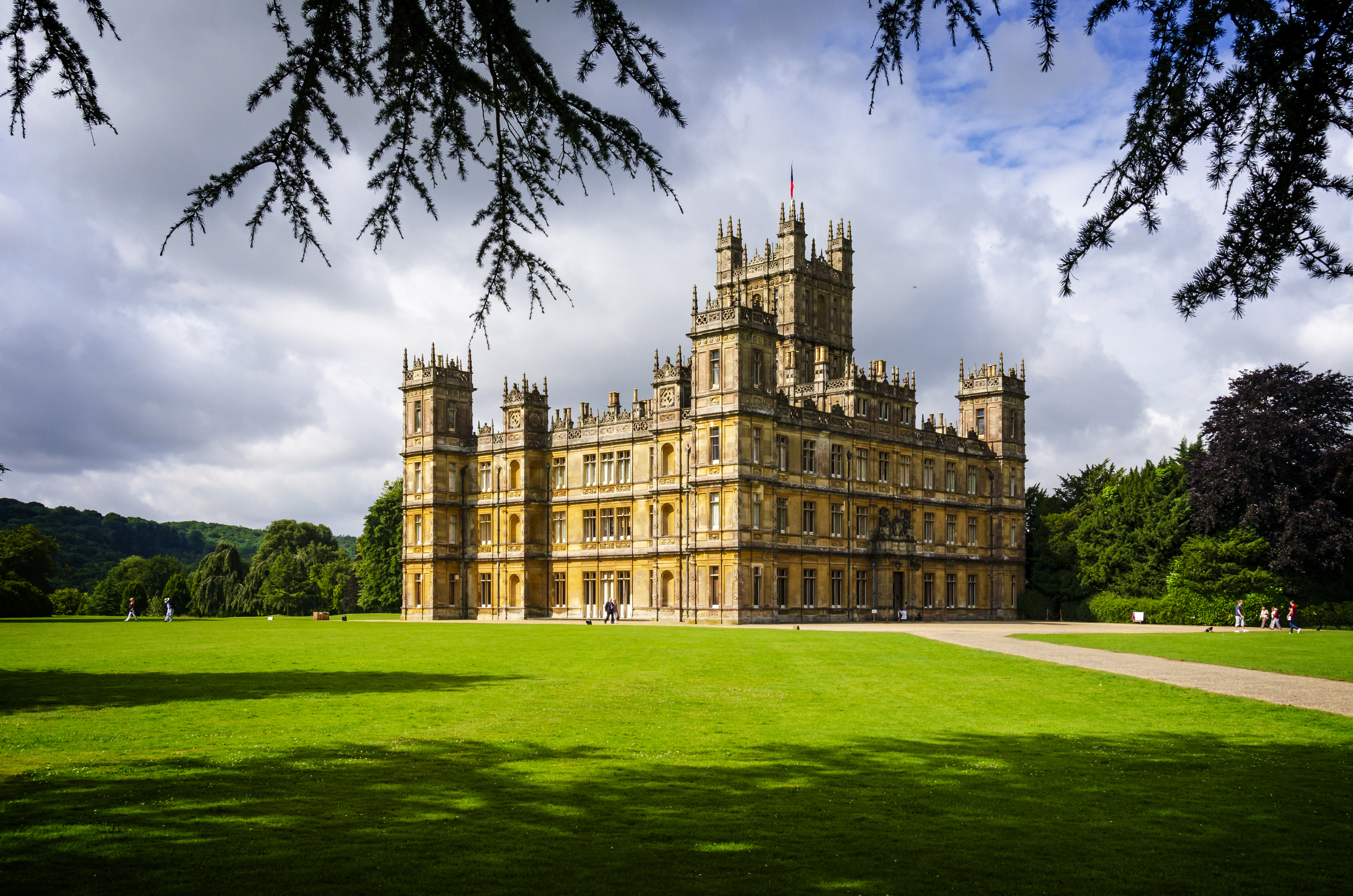
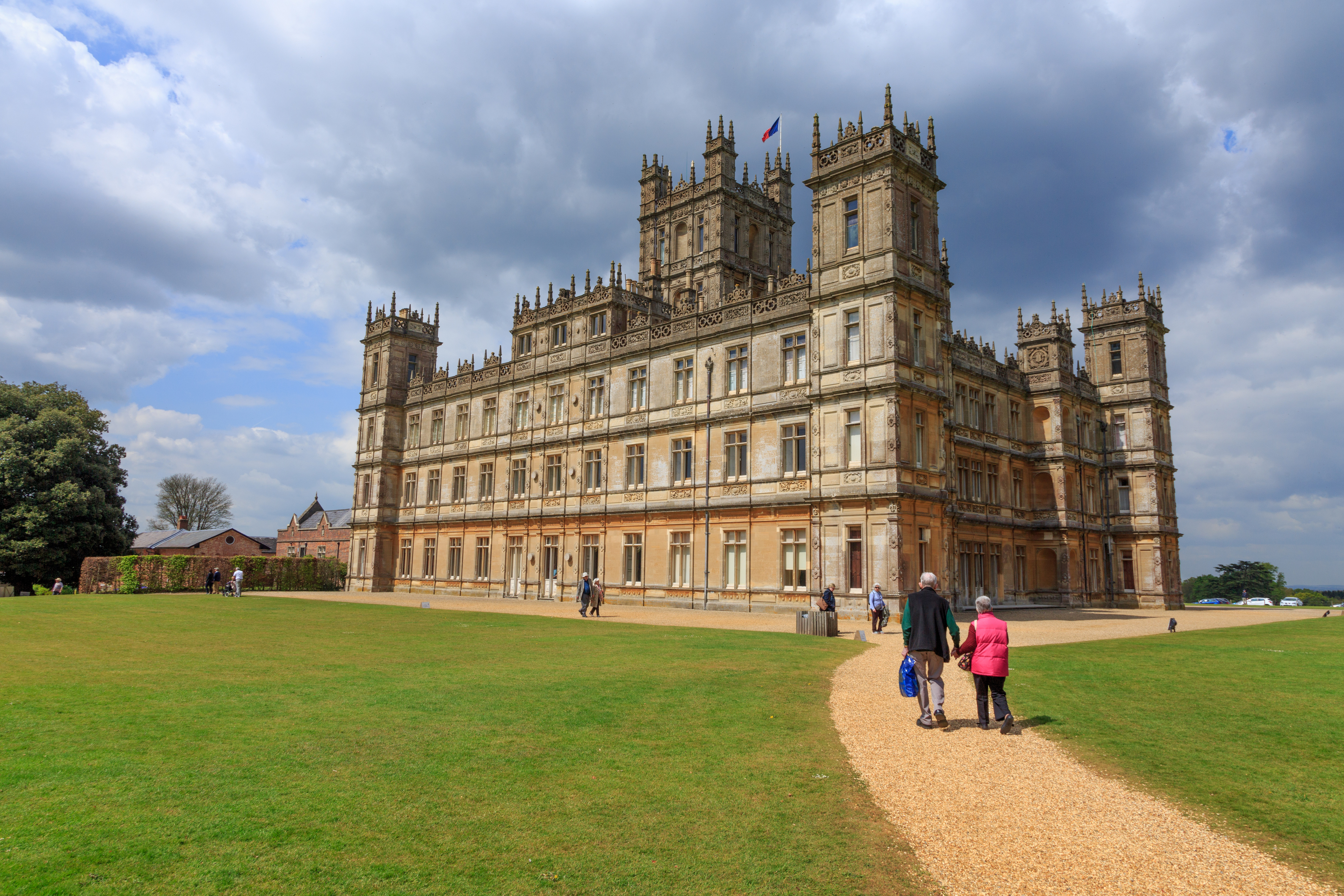
Highclere Park, Highclere, Newbury RG20 9RN, United Kingdom
Located in Hampshire, England, Highclere Castle has gone through three iterations from its beginnings in the medieval era to today. Ownership of the estate’s land can be traced back to 749 A.D. when Bishop William of Wykeham built the first structure and gardens of Highclere. In 1679, Highclere Palace House was first made of brick that was later encased in stone. It wasn’t until 1842 when Sir Charles Barry, a renowned architect, turned Highclere House into Highclere Castle as it is seen today. The modern version of Highclere was constructed with Bath stone because Barry felt the stone could be carved more intricately. Highclere’s intricate stonework includes ornate carvings, pinnacles, and crenellations, highlighting Barry's craftsmanship and the skill of the masons.
Highclere Castle, the iconic filming location for the popular TV series Downton Abbey, holds significant cultural and historical value. The castle's impressive Gothic Revival architecture and fine masonry details provide an authentic backdrop that enhances the show's depiction of early 20th-century aristocratic life. The intricate stonework, grand facades, and majestic interiors of Highclere Castle contribute to the series' visual appeal and help convey the opulence and elegance associated with the period. The castle's architectural beauty and historical authenticity play a crucial role in bringing the world of Downton Abbey to life for viewers.
Chatsworth House - Pride and Prejudice (2005)
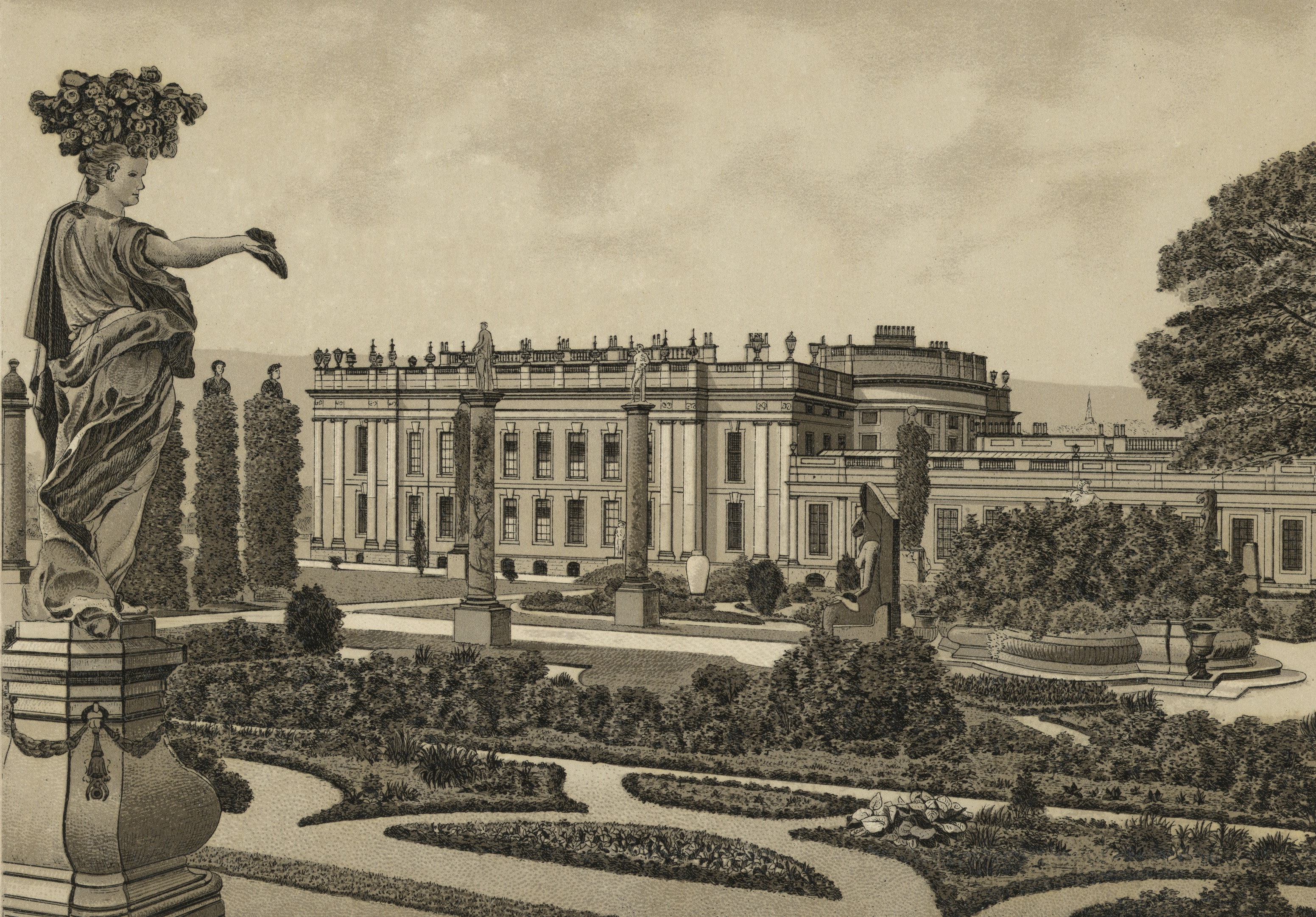
Bakewell DE45 1PP, United Kingdom Belonging to the Cavendish family for almost 500 years, this Derbyshire estate in England features one of the largest art collections in Europe as well as being home to one of the oldest and wealthiest families in England. Employing stone from the surrounding areas, Chatsworth contains a multitude of different types of materials such as sandstone, marble, and crinoidal limestone. The craftsmanship in the stonework, particularly the richly decorated interiors and exterior sculptures, showcases the skills of the period's artisans. Chatsworth's architectural and masonry significance makes it a masterpiece of English country house design.
Chatsworth House, featured in the 2005 film Pride and Prejudice, served as the inspiration for Mr. Darcy's Pemberley in Jane Austen’s novel of the same name. Its Baroque architecture and exquisite masonry details, including finely carved facades and sculptures, provide an authentic and visually captivating backdrop. The estate's majestic interiors and gardens enhance the portrayal of wealth and refinement, embodying Pemberley's grandeur. Chatsworth's historical and architectural splendor adds depth and authenticity to the film.
Beverly Wilshire Hotel - Pretty Woman
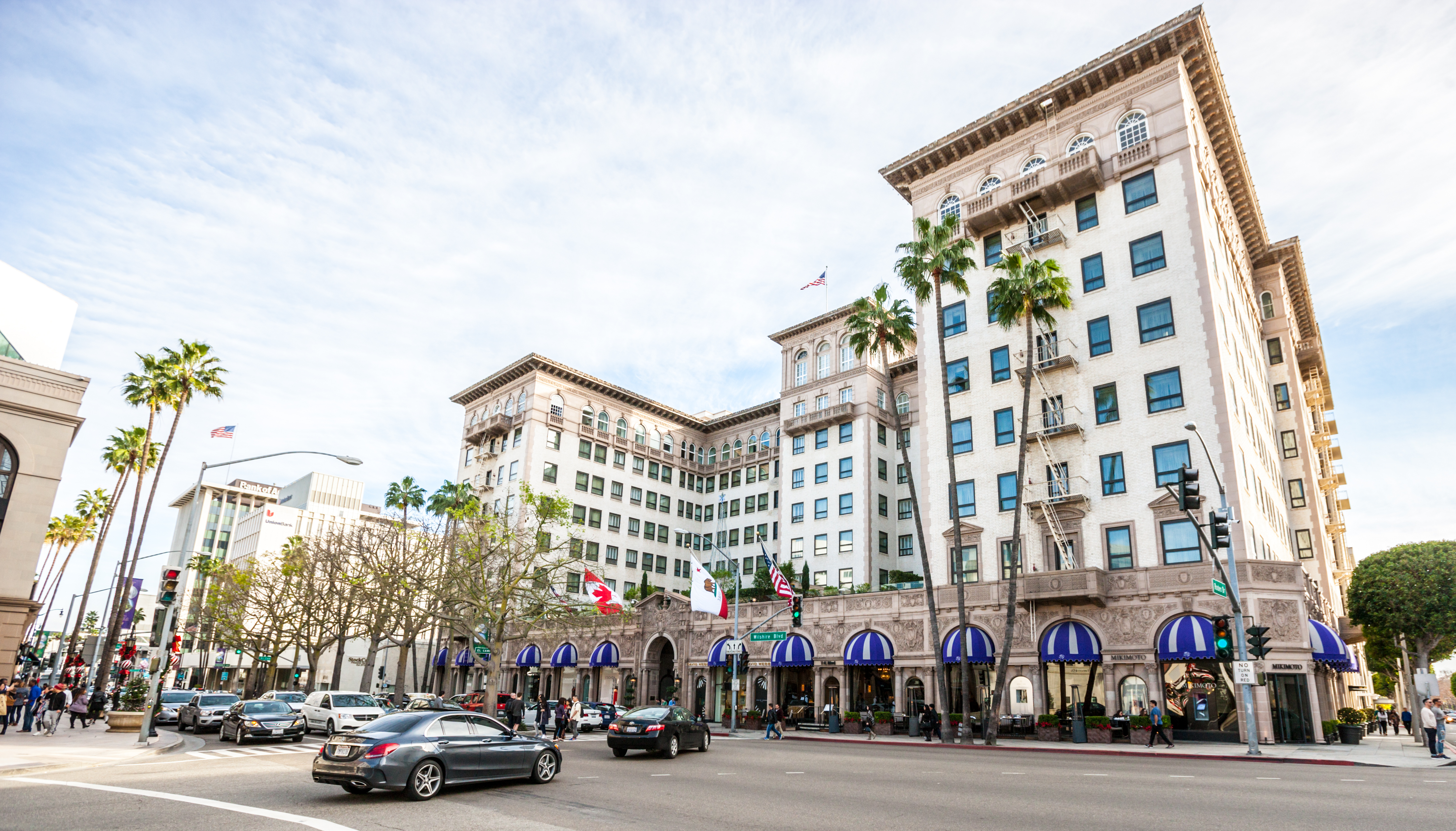
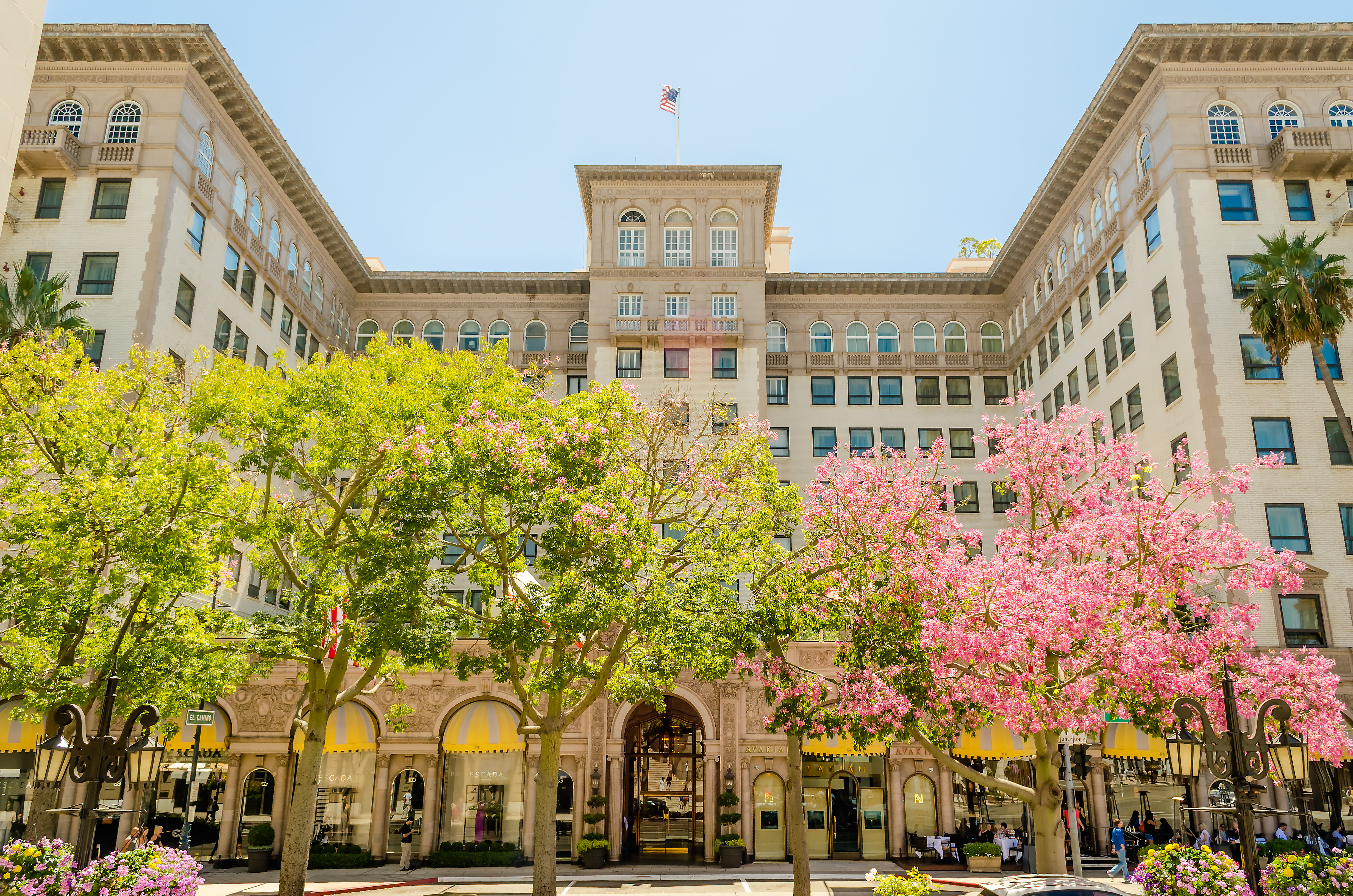
9500 Wilshire Blvd, Beverly Hills, CA 90212
Originally built in 1928 by Walter G. McCarty and designed by the Walker and Eisen architectural firm, the original Beverly Wilshire Hotel structure is made of Tuscan stone and Carrara marble before the later additions and renovations. The Renaissance Revival-style hotel’s facade features intricate detailing, including arches, pilasters, and ornate cornice in a perfect blend of European architectural elements and Hollywood glamour. The strength of the hotel’s structure has allowed it to survive three major earthquakes in Los Angeles. Over the years, the hotel has undergone renovations, preserving its historic character while enhancing its luxury, making it a prominent landmark in Beverly Hills.
The Beverly Wilshire Hotel gained iconic status through its prominent role in the film Pretty Woman (1990). The hotel served as the luxurious setting for key scenes, symbolizing wealth and sophistication. The fanciful stylings of the building and its rich detailing enhance the film's portrayal of glamour and romance. The hotel's classic design and opulent interiors provide a striking backdrop that complements the story's themes of transformation and elegance, cementing the Beverly Wilshire's place in cinematic and cultural history.
Mehrangarh Fort - The Dark Knight Rises
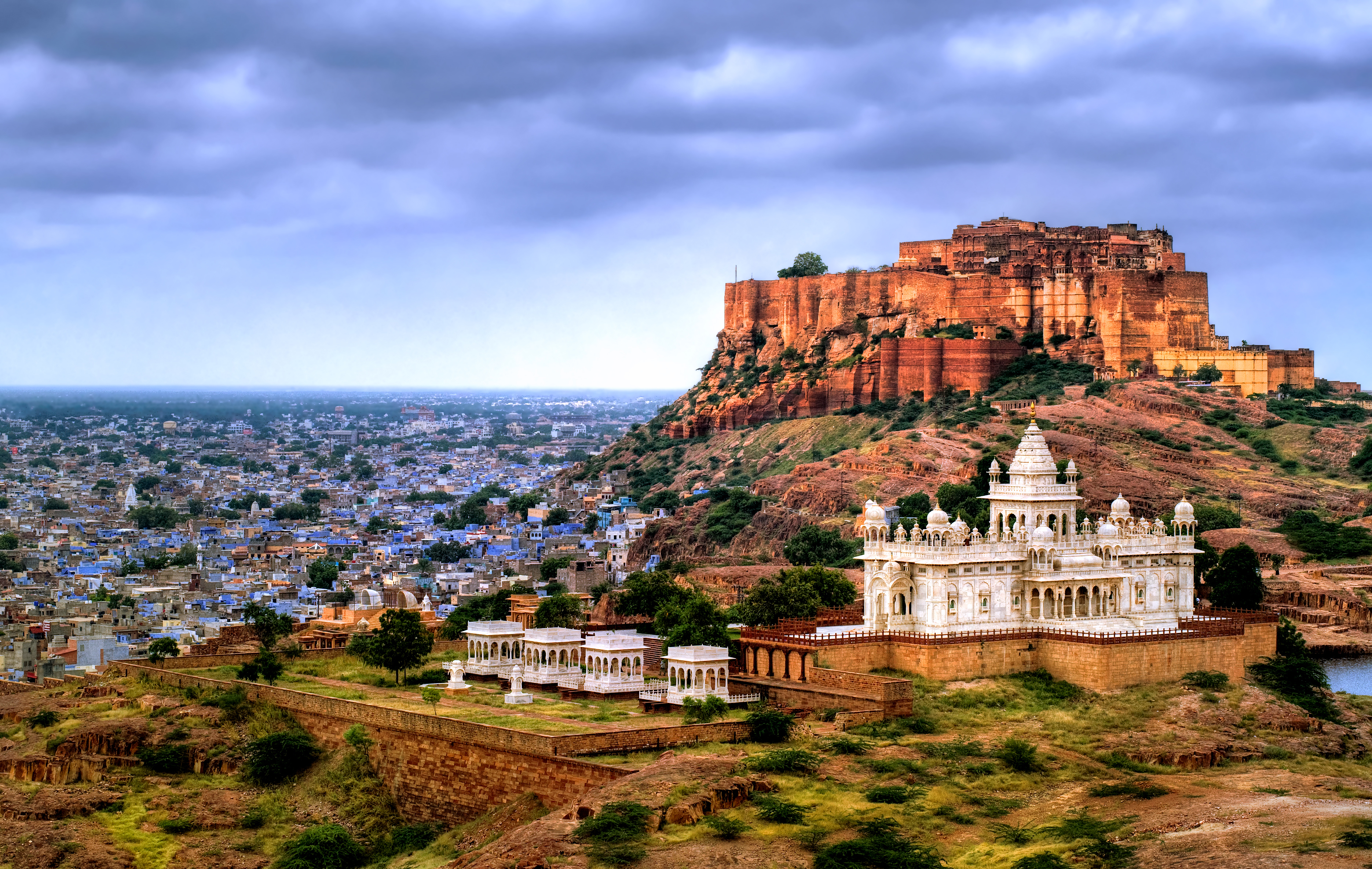
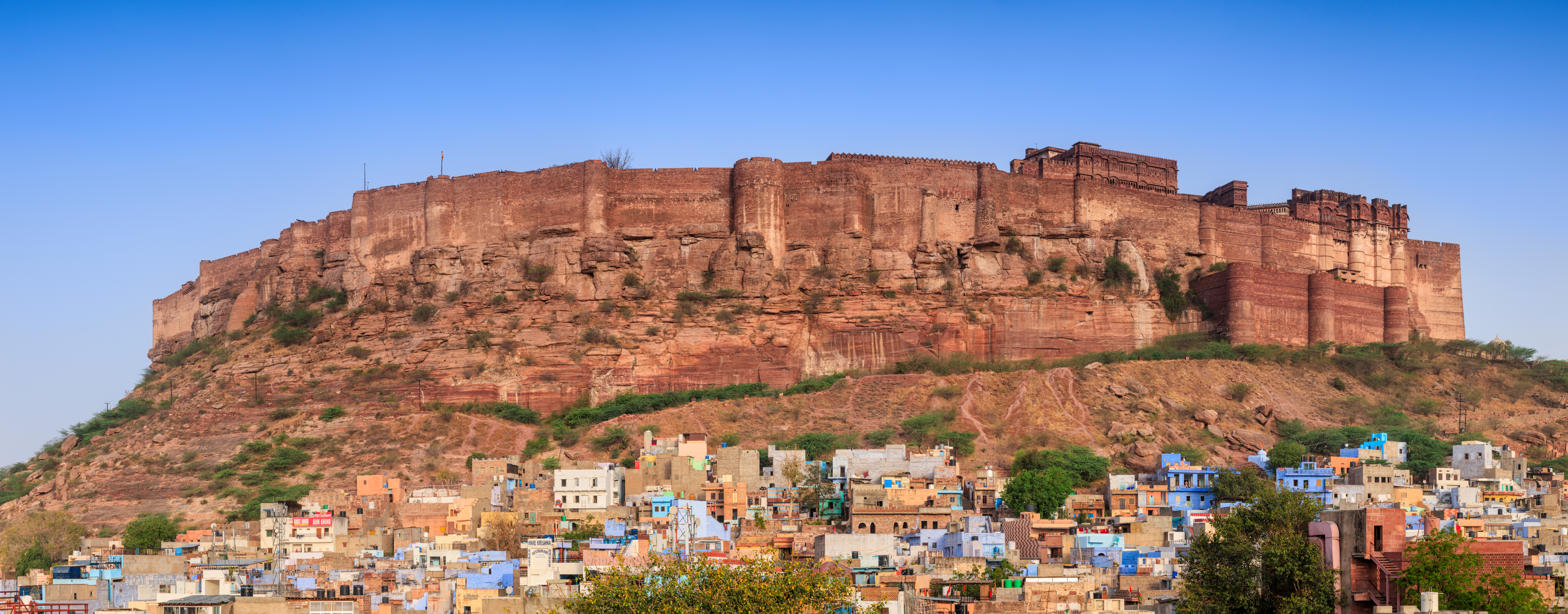
Sodagaran Mohalla, Jodhpur, Rajasthan 342001, India
Mehrangarh Fort, located in Jodhpur, India, was built in 1459 by Rao Jodha. This massive fort, rising 410 feet above the city, features impressive masonry work in red sandstone. The fort's construction spanned several centuries, with additions by successive rulers. Its walls, up to 36 meters high and 21 meters wide, showcase intricate carvings, ornate lattices, and detailed jharokhas (balconies). The fort's seven gates, each with unique stonework, tell stories of historical battles. The craftsmanship in the stone carvings and decorative elements reflects the skilled artisanship of the period, making Mehrangarh Fort an architectural marvel.
Mehrangarh Fort's stunning masonry details play a crucial role in its significance in the movie The Dark Knight Rises (2012). The fort's imposing red sandstone walls, intricate carvings, and majestic architecture provided a visually striking backdrop for the scenes depicting the fictional "Pit" prison. The fort's historical and architectural grandeur, with its richly detailed stonework and impressive scale, added a sense of gravitas and increased the foreboding tones of the scenes the fort is featured in. The use of Mehrangarh Fort in the movie highlights its architectural beauty and showcases its cultural heritage to a global audience.